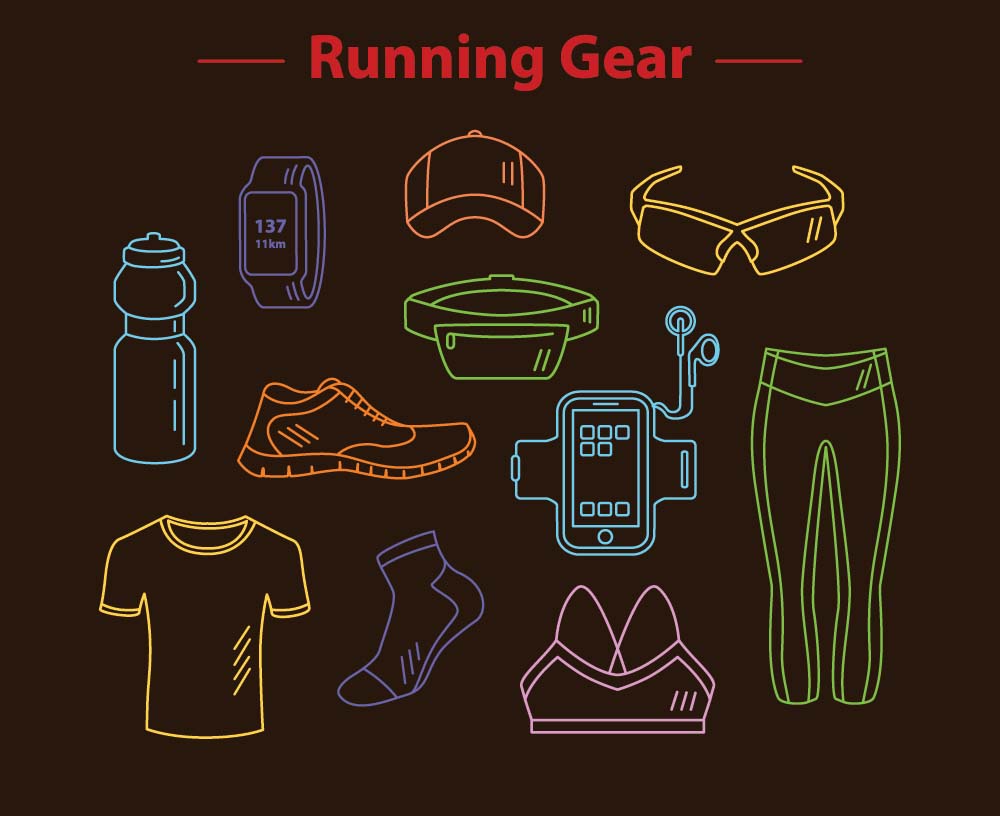So, you’ve turned 40 or are well above it, and are wondering if you can take up running as a way to stay fit? We’re sure you have plenty of questions about how to start out on this fitness journey. It’s natural to have some apprehensions, especially if you haven’t been a runner all your life. And that’s why we asked two experts all the queries you might have, so that you can be armed with all the knowledge you need to start off.
Our first expert is Pushpa Bhatt, Ultramarathon Runner and a certified Nutrition & Lifestyle Coach. If you aren’t familiar with this 66-year-old inspiring woman runner then you should head to the profile Her Circle has done on her. Just like you want to, she started her story as a runner in her 40s, so who better to ask, right?
Our second expert is a bonafide scientist and an avid marathon runner. Sheetal Patil is the Head – Exercise Physiologist, Dream To Play Welfare Foundation. She is also a Consultant Exercise Physiologist for Fitpage, holds an MS in Exercise Physiology, and is an ACSM-certified Marathon Trainer too.
With guidance from these amazing women, can you even go wrong? Of course not! Here is all they had to say about the frequently asked questions you may have about running in your 40s.
Should you even run in your 40s?
Both Patil and Bhatt say yes. Bhatt explains that for women this age, hormonal changes cause “hot flashes, sluggish metabolism, weight gain leading to lack of confidence. Running is an excellent holistic workout which helps women in this age group with physical and mental health.” Patil says walking, jogging, sprinting and running are all physical activities that come naturally to us, no matter what our age.

Getting the basics right is the key here
If your goal is to take up running as a consistent fitness activity, then Patil recommends you start with an appropriate training plan. “If this is an increased level of activity for you, I would recommend getting your basic physical check-up done by a physician to rule out any underlying health conditions,” she says. “Also, meet a sports physiotherapist - they can, with a few simple movement patterns, check for any muscle imbalances/strength asymmetry that you may have. They can help analyse your running gait (pattern) and recommend the right shoe for you.” Patil also recommends you keep up with regular strength-training activities like yoga.
If you aren’t already a runner, then there are particular steps you can take to turn into one. Bhatt explains these steps:
• Start with brisk walking for 30 minutes.
• Slowly move to running short distances at a speed at which you can also talk normally (without feeling breathless).
• Build running slowly around walking and transition gradually into running.
• Make sure you don’t skip warm-up and cool-down. Skipping cool down can lead to sore muscles the next day.
• Once you start running, your initial goal should be in a range of five to 10 kilometres. Over a period of time, as you grow in strength and stamina, you can aim to do 10-20 kilometre-long races.

Getting the right gear for your run
Every fitness activity requires appropriate gear to improve your endurance and performance. Patil gives the full lowdown on all the gear you need:
• To avoid skin chaffing and blisters on your feet, it is essential to pick T-shirts/tops, shorts/track pants, socks and even your underwear made of materials that wick away sweat from the body, keeping you dry and comfortable during the run. You can use petroleum jelly or coconut oil to additionally help prevent skin chaffing.
• Pick a basic running shoe recommended by your sports physiotherapist to provide you the maximum support while running. Having two pairs of running shoes is advisable.
• Choose a well-fitted bra that causes minimal movement while running to avoid stretching the ligaments that support your breasts.
• There are free Apps (Strava, Map my Run, Relive, Runalyze, Decathlon, Training peaks, etc.) that can help you track your run details such as heart rate, distance, pace, elevation, etc. These Apps will help you stay on track with your training. Various smartwatches and fitness bands are also available in the market that do the same.
• Depending on the weather conditions, buy reflective clothing so that you are easily visible on the road to prevent accidents.
• In very cold weather, you lose a lot of heat through your head, so it’s advisable to wear a woollen hat. While running, blood gets diverted from our hands/fingers to the running muscles -legs. This can result in fingers getting very cold and numb. Use lightweight woollen gloves to stay comfortable.
• Invest in a good quality waterproof windbreaker/jacket if you live in a heavy rainfall area. You can stuff your wet running shoe with old newspapers to dry them out quickly post running in the rain.
Warming up and cooling down, both matter
Both Bhatt and Patil insist on both a good warm-up and an even more thorough calm down. A good warm-up can not only help you prepare physically and mentally for the run, but also prevent any possible injuries, says Patil. A good warm-up can also improve your performance by increasing blood circulation to active muscles, adding to your reaction time and joint mobility. Bhatt recommends you do everything from arm circles, knee circles and leg swings to hip rotation, knee-to-butt exercises and knee-to-chest movements. The same applies to cool-down routines. “Consistently not stretching post your run can also increase the risk of muscle tissue injuries,” says Patil. A good stretching and cool down can help prevent injuries as well as the crippling pain many of us feel when we start exercising for the first time. Patil says that you should spend at least 10-20 minutes to complete your warm up and cool down routines as you get accustomed to running.
Nutrition and supplements you might need
“The foundation of health and fitness is nutrition,” says Patil. “The first point to remember is you are fuelling to train along with maintaining your basic health. It is important to know where you stand with regards to your nutritional markers -haemoglobin levels, iron levels along with Ferritin, Vitamin D3, Vitamin B12, average blood sugar levels, calcium and lipids. You need to start addressing any deficiencies/abnormalities found within these parameters.” So, going to your doctor for a full diagnostic check-up is clearly and highly recommended.
In case you have any deficiencies, your doctor will recommend which supplements you should take and in what dosage. Sticking to these recommendations instead of self-medicating is very important. “Supplements are a means to fulfil any nutritional deficiencies you may have,” Patil says. “The initial goal should always be to eat daily balanced meals to support your training. Do not cut out any food groups or energy source completely from your daily meal plans unless specifically required for any health reasons, as advised by a doctor or a dietitian.” Bhatt, however, lists a few things you should cut off from your diet: processed and packaged foods, sugar, alcohol and smoking. She also highlights the importance of eating homemade foods.

Fatigue, injury and recovery: Why these matter
“As a beginner runner, it is natural to have some muscle soreness. This usually gets relieved with a few hours of rest and hydration,” Patil says. “If your core and glutes muscles are not strong, there is a high chance of you getting injured,” says Bhatt. The following are some signs of fatigue and injury both these experts think you should watch out for:
• Sleep disturbances
• Higher resting heart rate than normal
• Feeling low in energy
• Muscle soreness that lasts more than a day or two
• Knee, back or ankle pain despite relaxation and recovery techniques
• Frequent cough and cold
• Legs feeling too heavy to move
• Swelling in the joints
• Sharp pain while running
Apart from doing your warm-up and cool-down routines consistently, taking time off to recover is going to help you prevent injuries. “Recovery is an equally if not the most important part of any fitness regimen,” Patil says. “To become a better runner you will have to gradually increase the time and distance that you run and the pace of your runs will also change. For these adaptions to occur by a process called supercompensation, providing appropriate recovery time is essential.” Bhatt says that all your workouts and running routines must be “scheduled to take into account training load and recovery time.” Patil recommends the following as a part of your recovery process:
• Rehydrate properly to replenish lost fluids and nutrients
• Apply an ice pack or ice cubes covered in a towel to sore muscles for five to eight minutes
• Foam rolling can also help relax sore muscles
• Get sufficient sleep at night and take short power naps through the day
• Pay attention to your running posture and ensure it’s appropriate throughout the runs
“Every woman will have a different recovery rate based on your health, fitness and training level,” reminds Patil.
How to stay motivated: Our experts reveal
“Keep the joy of running alive! Figure out if you enjoy running solo or with a group to stay consistent with your training,” says Patil. “Most women hit menopause around this age, coupled with grown-up children who don’t need you as much anymore,” Bhatt says. “Running helps you mentally and physically. They not only release feel-good chemicals like endorphins, but can also help you develop new social circles and give you a sense of belonging.” Patil agrees, but adds that you should figure out for yourself if you like running alone or in a group.
What she does recommend is that “as you get comfortable with your runs, try running on new roads and terrain.” Listening to your body’s signals and taking enough sunshine is also something Bhatt recommends, along with eating clean and never giving up. “You may struggle initially to keep up,” Bhatt says, “but give your workout a chance to work out for you.” Patil signs off by saying that if you do want to rest up for a few days, don’t beat yourself up about it: “DO NOT feel guilty for taking a short vacation from your runs to recover mentally and physically!”